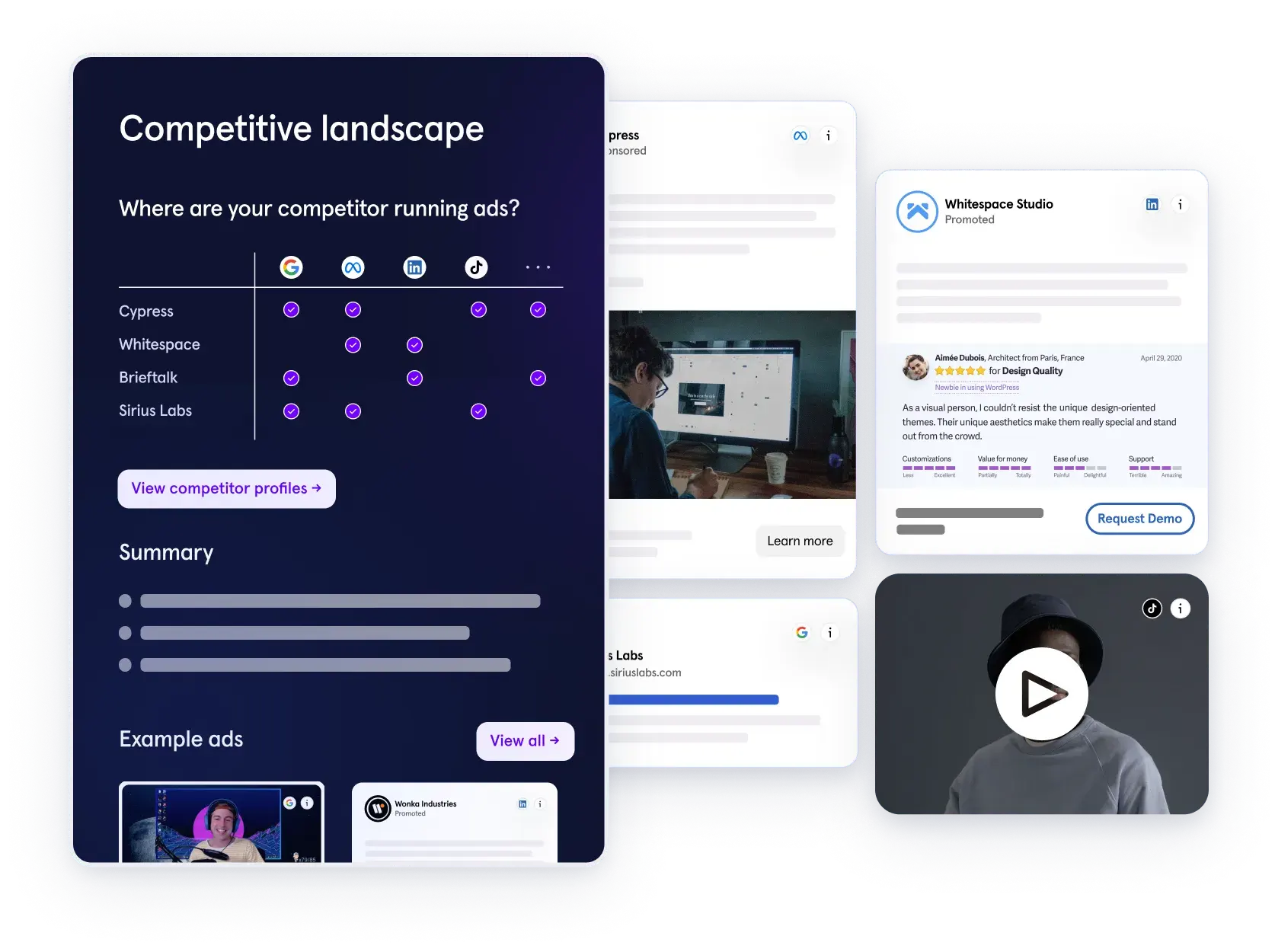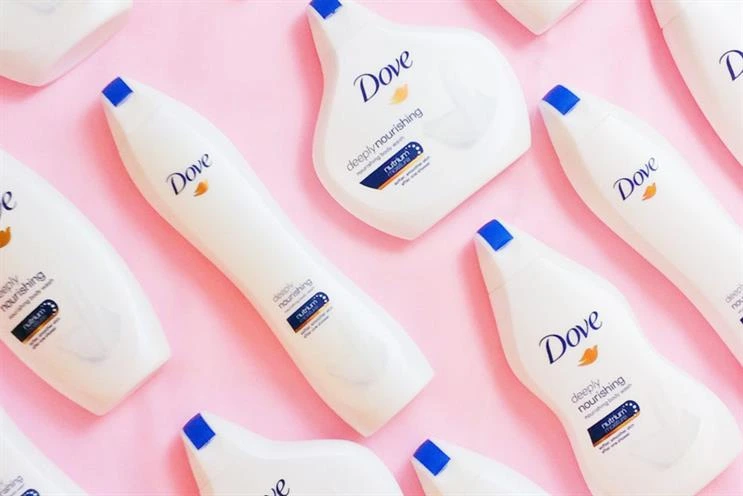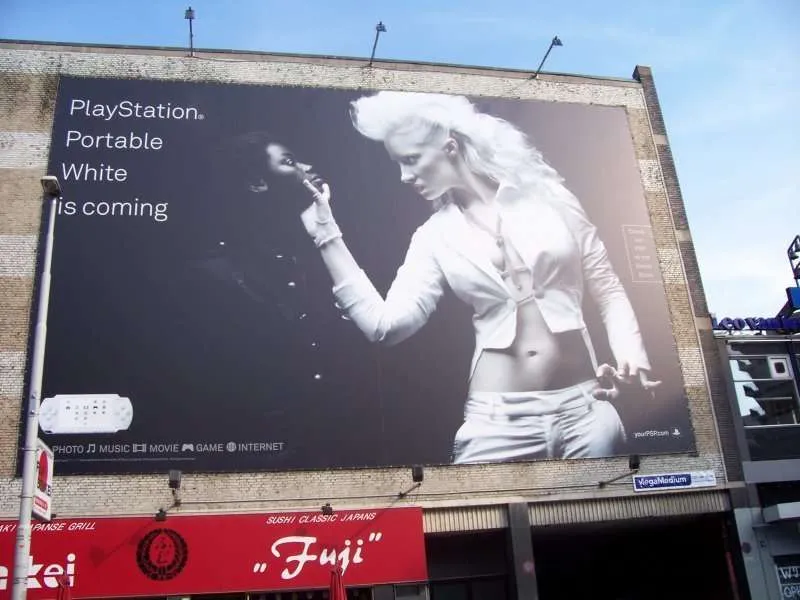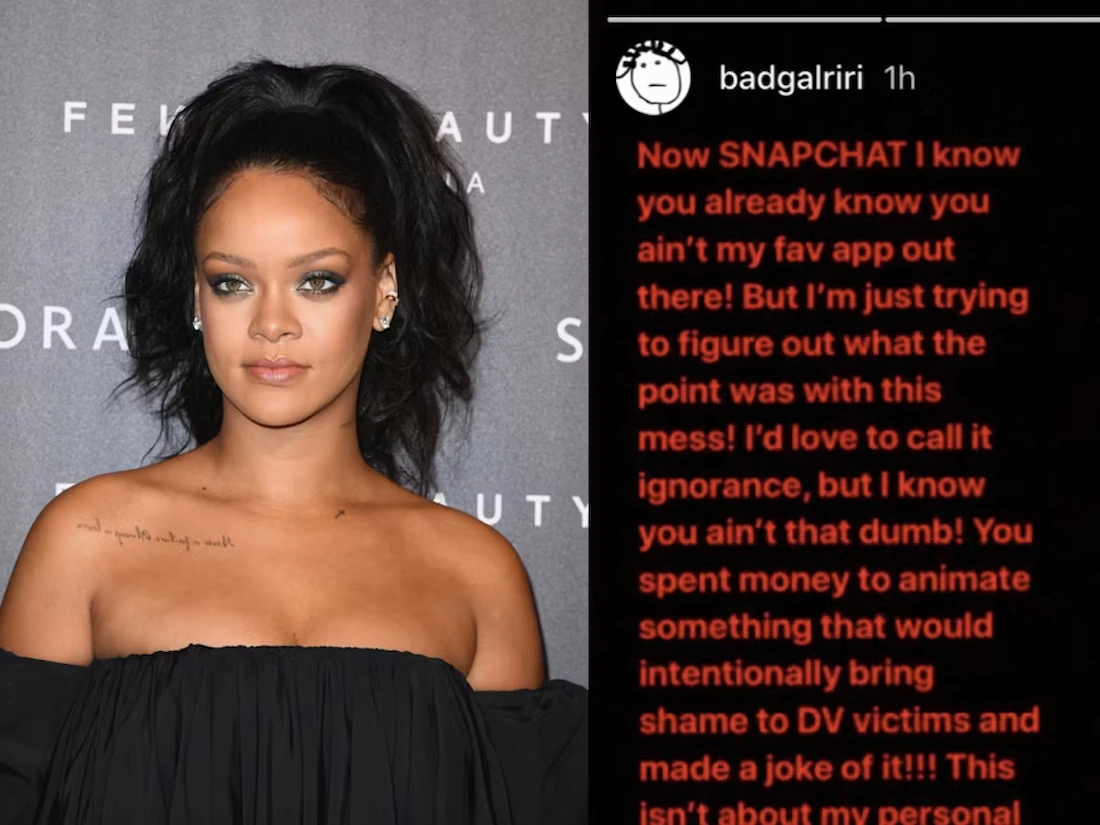Paid ads remain the top choice for startups and businesses when the objective is to reach audience or maximize conversions as quickly as possible.
But let’s be honest: paid advertising can look deceptively simple from the outside.
Pick a channel. Set a budget. Launch a few creatives. Wait for conversions.
But when the results trickle in, they don’t only look disappointing but also confusing. With clicks being expensive and conversions being low, the numbers don’t make sense. But the worst of all is that you have no idea why.
It’s highly possible that a bunch of advertising mistakes have brought you to this failure. If you’re a founder or part of a small marketing team, that kind of campaign failure stings twice as hard. You’re not burning venture-backed budgets for fun. Every dollar counts. Every ad is supposed to bring in real results.
Here’s the thing: most paid advertising mistakes aren’t wild strategic blunders. They’re quiet missteps. Tiny oversights that snowball. They often look harmless until your ROAS (Return-on-ad-spend) starts shrinking and you're forced to ask: “Is it the audience? The creative? The landing page? everything?”
In this guide, we’ll walk you through the most common advertising mistakes startups make. We’ll break down the causes and talk about how to fix them.
We have written this guide to help you spot these mistakes early before they cost you thousands in wasted ad spend.
Let’s get into it.
TL;DR: Common advertising mistakes to avoid
- Misunderstanding your target audience
- Neglecting creative testing and variation
- Using misleading or overhyped messaging
- Failing to match message, channel, and audience intent
- Skipping tracking and attribution setup
- Over-automating campaigns without guardrails
- Poor budget allocation and media planning
- Publishing offensive or insensitive ads
- Ignoring ad fatigue and frequency decay
- Neglecting post-click experience and conversion path
- Not analyzing your competitors’ ads and strategy
Mistake 1: Not analyzing your competitors’ ads and strategy
You wouldn’t launch a product without knowing who else is in the market. So why launch ads without knowing who else is in your feed?
One of the most avoidable advertising mistakes is skipping competitor research. And we are not talking about high-level SWOT analysis or reading a few blog posts. We mean real, ad-level competitive intelligence i.e., what your competitors are running, where, how often, and why.
If you don’t know what your closest competitors are doing, you’re flying blind. You could be bidding on the same audiences (or the wrong one), pushing nearly identical offers, or even running the same hooks without realizing it. And in crowded markets, differentiation is survival.
Here’s how this mistake typically plays out:
-
Running similar offers without knowing it
If three tools in your category are all offering “7-day free trials” in their ads and yours makes it four, you’re going to get lost in the crowd. Your product may be great, but it won’t stand out unless you position it against what’s already out there.
-
Missing trend-driven or seasonal shifts
Let’s say a competitor starts a back-to-school campaign early or capitalizes on a sudden regulatory change with targeted messaging. If you’re not paying attention, they’ll get the first-mover advantage and cheaper clicks, while you scramble to react.
-
Ignoring gaps in creative or tone
Maybe all your competitors are overly formal, corporate, and dry. That’s your chance to inject personality, humor, or story. But you’ll never know unless you analyze what their ads feel like.
-
Failing to benchmark spend, placement, and channel focus
You might be putting all your energy into Google while your competitors are dominating on LinkedIn (because there’s an audience). Or you could be outbid on Meta because you’re targeting the exact same lookalike audiences without realizing it.
How this hurts your campaign:
- You become part of the noise instead of standing out
- You miss strategic opportunities for positioning or timing
- You burn budget testing things your competitors already proved (or disproved)
- You lose to weaker products with a better ad strategy
How to fix it:
- Use free tools like Meta Ad Library, and LinkedIn Ad Transparency, or search “Your Competitor + Ads” on Google to see what’s live
- Invest in some good competitor intelligence tools like the Competitor Ad Intelligence tool (COIN) by Kaya, Spyfu, Adbeat, etc. to benchmark competitor’s performance and see where they are getting track.
- Set up a competitive ad swipe file to track offers, visuals, CTAs, and angles regularly
- Identify whitespace: what no one is saying, what no one is offering, what tone no one is using
Competitor research isn’t about copying; it’s about context. The more you know about what’s out there, the smarter, sharper, and more strategic your own ads become.

Competitor Ad Intelligence Tool (COIN) by Kaya
Mistake 2: Misunderstanding your target audience
You should get one thing straight about advertising: no amount of budget, creative flair, or algorithmic tweaking will fix an ad that’s talking to the wrong people.
And yet, this is where most paid campaigns go sideways. Founders often assume they know their audience. Marketers rush to set up campaigns before doing proper segmentation. And teams launch broad-targeted ads hoping that someone will bite.
That’s not how winning campaigns work.
Paid advertising only becomes effective when your message hits the right person, at the right time, with the right offer. Miss any part of that formula, and you’re sabotaging your own data. Even your failures won’t teach you anything because you weren’t talking to the right people in the first place.
Here’s what misunderstanding your audience can look like:
-
Lack of audience research
If you’re not running surveys, looking at customer interviews, or digging into tools like SparkToro, Meta Audience Insights, or LinkedIn Matched Audiences, you’re flying blind. Broad demographic targeting isn’t enough anymore. You need to know how your ICP speaks, what they want, and what triggers their action.
-
Assuming instead of validating
“We know our users.” Sure, but do your ads show that? Many startups create personas based on intuition or gut feeling, not real user behavior. If you’ve never A/B tested different pain points, tones, or visual languages, you may be selling to a version of your user that doesn’t exist.
-
Platform misalignment
Your B2B ICP might be active on both Facebook and LinkedIn, but their intent and behavior are wildly different. LinkedIn may reward more direct, ROI-driven ads. Facebook may need narrative and emotion to stand out. If you use the same message across both, expect inconsistent results.
-
Generic or misaligned messaging
Even if your targeting is right, a weak message can destroy your chance to connect. For example, if your ad headline says “Grow Your Business Faster” but your audience is a CFO looking to cut burn, you’ve already lost the click. Your message needs to reflect what that person actually cares about.
How this hurts your campaign:
- Low CTRs (Click-through rate) from disinterested viewers
- Poor engagement signals that penalize your ads in the algorithm
- High CPC (Cost per click) because your ads aren’t getting quality scores or relevant feedback
- Incomplete or misleading data that makes optimization harder later
How to fix it:
- Build rich, behavior-driven personas besides demographic characteristics
- Validate your assumptions by testing multiple messaging angles early
- Adjust messaging per platform (e.g. direct and practical for LinkedIn, aspirational or emotional for Meta); take help from ad libraries and competitor intelligence tools if required.
- Use copy frameworks like PAS (Problem–Agitate–Solution) tailored to each segment
Getting your audience right is the foundation of a successful business. If you don’t get the audience right, nothing else will matter.
Mistake 3: Neglecting creative testing and variation
You don’t need a world-class design team to win paid ads. But you do need to test.
This is one of the most common paid advertising mistakes I see, especially in early-stage teams: they launch a single creative, maybe two versions of a headline, and then… wait. Weeks pass, performance dips and the assumption is “ads just aren’t working.”
But in most cases, it’s not that ads don’t work. It’s that you didn’t give them a chance to evolve.
Paid advertising is a testing game. You’re not buying results; you’re buying learning. If you aren’t actively testing and iterating on your creatives, messaging, and CTAs, you’re missing out on what actually drives your cost-per-click down and conversions up.
Here’s how this mistake typically shows up:
-
Over-relying on a single creative
One ad may look good in a slide deck but in the wild? It can fatigue fast. Users scroll past it, performance drops and your whole campaign starts to decay. This is especially dangerous on platforms like Meta and TikTok where novelty drives performance.
-
Skipping structured A/B testing
It’s not enough to casually “try different things.” You need to isolate variables: headline A vs. headline B. CTA X vs. CTA Y. Image vs. video. Creative testing works best when it is backed by reasons.
-
Failing to test audience-specific creatives
A generic creative might technically work across segments, but you’re leaving money on the table. Your engineers, your CFOs, and your HR buyers each need different pain points and language. Segment your messaging even if your offer is the same.
-
No feedback loop from the performance data
Many teams don’t have a process for reviewing performance weekly or even bi-weekly. You need to look at CTR, thumb-stop rate (on video), engagement, and comments to learn what’s resonating. Your audience is telling you what works, you just have to listen.
How this hurts your campaign:
- You hit creative fatigue quickly and don’t realize it
- CTR plummets, CPCs go up, and your relevance score tanks
- You waste budget on weak variants while better ones go untested
- You make decisions based on incomplete learning
How to fix it:
- Set up structured A/B or multivariate tests with clear hypotheses
- Start with 3–5 creative variations per audience and monitor early signals (first 3 days)
- Refresh your ads regularly, especially on high-frequency platforms
- Use dynamic creatives where possible (Meta, Google) but keep manual control to validate assumptions
The truth is: your first creative will rarely be your best performer. Testing isn’t just for scale, it’s how you find what scales.
Mistake 4: Using misleading or overhyped messaging
Look, we get it. You want your ad to pop, people to stop scrolling and feel something, and CLICK.
But when you cross the line into overpromising or misleading, you’re not just hurting performance. You’re putting your brand at risk.
One of the biggest paid advertising mistakes early-stage founders and marketers make is believing that hype equals conversion. They lean into phrases like “#1 tool for growth” or “10x your revenue instantly” without the receipts. Or they tease irresistible benefits the product can’t really deliver. Or they write aggressive CTAs like “Act now before we shut this down forever” — only for the same ad to run 6 months straight.
It might work short-term. But in the long term, you're training your audience to distrust you.
Here’s how misleading messaging usually shows up:
-
Overpromising benefits
You’re not just selling a solution, you’re selling hope. But if your SaaS tool or service can’t realistically “cut churn in half overnight,” that claim will backfire. Users may click out of curiosity but bounce once they realize the gap between promise and product.
-
Greenwashing and virtue signaling
This happens often in sustainability or health-oriented brands. Ads that position a company as eco-friendly or ethical without real substance get flagged fast. Consumers and platforms are smarter than ever about calling out hypocrisy.
-
Clickbait tactics that bait and switch
Teasing something irresistible in the ad (“Free AI strategy template!”) only to redirect to a paywall or unrelated offer. Yes, you might get the click. But you’ll kill trust and see your bounce rate spike.
-
Non-compliant or shady copy
This includes using urgency countdowns, fake scarcity, sketchy testimonials, or health claims that violate ad policies. Not only does this reduce campaign lifespan, but it can also get your account flagged or suspended, especially on Meta, Google, and TikTok.
How this hurts your campaign:
- High bounce rates and low on-site engagement
- Declining CTR as users learn not to trust your message
- Ad disapprovals, account restrictions, or shadow bans
- Brand equity damage, especially if the backlash goes public
How to fix it:
- Align your copy with your real value proposition
- Back every bold claim with proof: testimonials, screenshots, outcomes
- Avoid urgency or exclusivity unless it’s actually true
- Have a clear internal review process for compliance (especially in regulated industries like finance or health)
Mistake 5: Failing to match message, channel, and audience intent
Imagine walking into a hardware store and having someone yell at you about a software demo. That’s what it feels like when your ads show up on the wrong platform, in the wrong format, with the wrong message.
This is a mistake that doesn't feel like a mistake when you’re setting up the campaign. The ad might look great. The copy might read well. But if it’s showing up in a context that doesn’t match how your audience behaves or what they’re expecting at that moment, consider it wasted.
Great advertising isn’t just about what you say. It’s where and how you say it.
Here’s what this disconnect typically looks like:
-
Wrong channel for the goal
Say you're running Google Search ads for top-of-funnel awareness. That’s a mismatch. People searching are already intent-driven, hence you’re better off focusing on mid or bottom-funnel CTAs. Or maybe you're promoting a sales-heavy message on Instagram Reels, where people expect entertainment, not conversion.
-
Misunderstanding platform behavior
What works on LinkedIn won’t work on TikTok. Your audience might exist on both platforms, but how they interact, what catches their attention, and how they perceive value is totally different. If you post the same creative across platforms, expect wildly uneven results.
-
Mismatched funnel stage
A cold audience that’s never heard of your brand needs education, not urgency. Running “Book a demo now” to a first-time scroller is like proposing on the first date. You need to warm them up with story, insight, or social proof before asking for action.
-
Ignoring creative format expectations
For example, portrait-style UGC performs best on TikTok and IG Stories. But try that same ad on YouTube pre-roll or LinkedIn Feed, and it might feel amateurish. If the format doesn't match the norm, people tune out before the message even lands.
How this hurts your campaign:
- Low engagement and scroll-past behavior
- High CPC due to poor relevance scores
- Negative feedback signals to the algorithm (e.g., hiding your ad)
- Poor conversion rates even from the right audience, simply due to context mismatch
How to fix it:
- Define the intent of each platform before planning creatives
- Map each campaign to a funnel stage: awareness, consideration, decision
- Tailor your copy and creative per channel. Don’t recycle assets without strategic adaptation
- Monitor creative-specific metrics: thumb-stop rate on video, dwell time, reactions vs. clicks
Think of your ad as a guest at a party. If they show up wearing a tux to a beach bonfire or crack a joke in the middle of a serious conversation, they’ll be ignored at best and resented at worst. Don’t be that guest.
Mistake 6: Skipping tracking and attribution setup
You wouldn’t run a sales team without a CRM. So why run paid ads without clear tracking?
This is one of those advertising mistakes that feels harmless until you realize you’ve spent thousands and have no idea what worked. Or worse: you’re making decisions based on misleading data that sends you in the wrong direction.
If you’re not actively tracking conversions, attribution, and the full journey from click to customer, your paid advertising is basically guesswork. And for startups, guesswork can be quite expensive.
Here’s how this mistake typically unfolds:
-
Non-existent or broken conversion tracking
You’ve set up campaigns but forgot to add (or correctly install) the Meta Pixel, LinkedIn Insight Tag, or Google Ads Conversion tag. That means platforms can't optimize toward real business outcomes and you can’t measure what matters.
-
Relying on default attribution models
If you’re letting Google Ads take full credit for a conversion that started from a Meta ad, your budget allocations will get skewed fast. First-click vs. last-click vs. data-driven attribution matters more than most realize.
-
Not tracking micro-conversions
Only tracking purchases or form submissions ignores all the small signals: button clicks, page scrolls, and add-to-carts. Without those, you’re blind to early friction points or drop-off reasons.
-
No integration between platforms and CRM
If your campaign platforms (Meta, Google, LinkedIn) aren’t connected to your backend (like HubSpot, Salesforce, or even Google Sheets), you’re not closing the loop. As a result, you’ll end up optimizing for leads that never convert.
How this hurts your campaign:
- You waste budget on ads that aren’t actually driving value
- Algorithms can’t optimize toward the actions that matter
- You misinterpret performance (e.g., chasing high CTRs instead of high ROAS)
- Scaling becomes dangerous because you don’t know what’s working
How to fix it:
- Set up pixel tracking before launching a campaign. Make sure to double-check that events fire correctly using tools like Meta Pixel Helper or Tag Manager
- Choose attribution models that reflect your sales cycle. Multi-touch attribution is often more accurate, but not always necessary, especially for small teams with simple funnels. Still, be cautious with last-click models, as they can ignore key non-conversion touchpoints like awareness or education campaigns.
- Track micro-conversions to better understand behavior and funnel leaks
- Connect ad platforms with your CRM so you can map lead quality, not just volume
You don’t need a data team to do this well. A minimum viable marketing analytics stack will be enough. But make sure to set up your tracking early and audit it often. Because the only thing worse than a campaign that doesn’t work is a campaign that looks like it’s working when it’s not.
Mistake 7: Over-automating campaigns without guardrails
Automation is a gift. But without a strategy, it becomes a liability.
If you’ve ever launched a campaign using Google’s Smart Bidding or Meta’s Advantage+ options and walked away thinking, “Cool, the algorithm will optimize this for me”, you’re not alone. Many startups lean on automation to save time. But here’s the problem: automation amplifies whatever inputs you give it.
Automation is not a replacement for human oversight. And if you don’t actively steer your campaigns, the platforms will optimize for what they think success looks like, which is often not aligned with your business goals.
Here’s how over-automation goes wrong:
-
Blind reliance on smart bidding
You set a broad conversion goal like “maximize conversions” without telling Google what a quality conversion looks like. So the algorithm finds you cheap traffic from low-intent users who’ll click and never convert.
-
Letting auto-applied recommendations run wild
Platforms like Google and Meta routinely suggest “improvements” like broad match keywords, auto-created assets, or expanded audiences. Accepting all of them without review can undo months of strategic targeting.
-
No manual overrides or thresholds
If you don’t set boundaries (daily spend limits, frequency caps, geo-restrictions), your campaigns can spiral quickly. Especially when the algo is chasing scale at all costs.
-
No regular audits or manual checkpoints
Automation doesn’t mean no work. It means your work shifts to reviewing performance, spotting anomalies, and fine-tuning goals weekly. Skipping this step turns smart campaigns into runaway trains.
How this hurts your campaign:
- You get “cheap” conversions that never become customers
- Algorithms over-optimize for vanity metrics (clicks, traffic)
- Budget gets spent in places you’d never have chosen manually
- Performance becomes harder to diagnose because you didn’t control the inputs
How to fix it:
- Start with clear signals. Make sure your conversion tracking reflects real value (e.g., qualified leads, trial activations)
- Manually review and approve all platform recommendations
- Set campaign guardrails: max bids, budgets, geo, and frequency limits
- Schedule weekly audits to review spend, quality, and outcomes
Mistake 8: Poor budget allocation and media planning
Throwing more money at a paid ads problem rarely fixes it. In fact, it often makes it worse.
One of the most common (and costly) advertising mistakes startups make is poor media planning. It’s not just about how much you spend — it’s where, when, and why you spend it.
Founders often approach budgeting reactively: “Let’s double what we spent last month because it worked,” or “Let’s push everything to Meta because that’s where our competitors are.” But without a structured media plan and clear allocation logic, it’s easy to overspend on channels that don’t convert or starve the ones that do.
Here’s what this mistake typically looks like:
-
Overspending on low-ROI channels
Maybe it’s because of a gut feeling. Maybe a team member is more comfortable with one platform than another. But putting most of your spend on a channel just because “it’s worked before” can kill your blended ROAS if you’re not checking attribution.
-
Underfunding learning and top-of-funnel campaigns
Early-stage companies often go all-in on conversion campaigns without warming up audiences. But without brand awareness and middle-funnel education, those bottom-funnel CTAs don’t land. And worse: you don’t learn anything about messaging or creative performance.
-
No pacing or budget controls
If your campaign eats up 80% of the budget in Week 1, and performance tanks in Week 2, you’re stuck reacting instead of optimizing. This is especially painful if you’re using daily budgets with no caps across platforms.
-
Ignoring performance data when reallocating
Let’s say Google is bringing in cheap traffic, but Meta is converting better down the funnel. If you’re only looking at surface-level metrics like CPC or CTR, you might kill your highest-value channel.
How this hurts your campaign:
- Wasted spend on ineffective platforms or audiences
- Inability to scale because you don’t know what’s working
- Missed testing opportunities that could unlock performance gains
- Internal mistrust in paid ads due to unpredictable returns
How to fix it:
- Start with a performance model: define your CAC (Customer Acquisition Cost) goals, ROAS target, and LTV (Life-time Value) assumptions
- Allocate budgets by funnel stage (e.g., 30% awareness, 40% consideration, 30% conversion)
- Set pacing caps and review budgets weekly
- Use platform-level and blended attribution to inform reallocation decisions
Mistake 9: Publishing offensive or insensitive ads
One poorly worded ad. One tone-deaf visual. One joke that lands the wrong way. That’s all it takes to spark a wave of backlash that not only kills performance but also damages your brand.
You’d think this would be rare. But it still happens. A lot.
In the rush to move fast and break things, many startups skip the step where someone asks: “Could this be misinterpreted?” And unlike other advertising mistakes, this one isn’t just about wasted spend. It’s about trust, reputation, and sometimes… rounds of public apology!
Here’s how this mistake usually shows up:
-
Cultural insensitivity or stereotyping
Sometimes it’s unintentional: a reference that seemed funny in the team meeting, but offensive to the public. But if you don’t have diverse voices reviewing your creative, you risk reinforcing harmful tropes or alienating key segments.
-
Oversexualization, shock value, or controversy-for-clicks
This often comes from a place of wanting to “stand out” or “push boundaries.” But while edgy creative might drive curiosity, it rarely drives trust. And on platforms with tight ad policies (Meta, TikTok), it can also get your campaigns flagged or banned.
-
Unintentional blunders due to poor context
Do you remember the Kendall Jenner Pepsi ad that tried to connect soft drinks to protest movements? Or Dove’s infamous “body bottle” campaign? These weren’t malicious they were just tone-deaf. But the backlash was swift and brutal and costed both of these brands money and equity.
-
No brand safety checks or pre-launch review filters
Many startups don’t yet have formal QA processes for creative. That’s risky. You wouldn’t ship code without testing, so why ship ads without feedback?
How this hurts your campaign:
- Ad disapprovals or account suspensions from platforms
- Community backlash or public shaming on social media
- Brand damage that takes months (or years) to repair
- Internal team burnout from crisis management
How to fix it:
- Build a pre-launch checklist that includes cultural and tone review
- Use inclusive language and visuals by default
- Run creative past a diverse group of reviewers before pushing live
- Monitor comments, reactions, and shares; your audience often gives real-time feedback on tone
Being bold doesn’t mean being reckless. You can be clever, creative, and culturally aware at the same time. In fact, the best brands are.
Mistake 10: Ignoring ad fatigue and frequency decay
One of the sneakiest advertising mistakes startups make is letting the same creative run for months without rotation. In the beginning, it performs well. Clicks are solid. CAC looks manageable. But over time, performance plateaus and dips. And because there’s no major change in spend or targeting, you’re left confused.
The answer is often simple: your audience has seen the ad too many times, and they’ve tuned it out.
This is ad fatigue, and it kills performance slowly and silently.
Here’s how it typically shows up:
-
High frequency with little variation
If your Meta or Google campaign is showing the same ad to the same people 6+ times, it’s almost guaranteed to burn out. That leads to “scroll-past” behavior which not only drops CTR but also hurts your relevance score.
-
Dropping CTR and rising CPC
These are classic signs of fatigue. If your click-through rate starts falling while your cost per click rises, chances are your audience isn’t engaging anymore.
-
No creative refresh plan
Many early-stage teams focus heavily on launching the first set of creatives and then forget to plan what comes next. Without a weekly or bi-weekly creative rotation strategy, your campaign gets stale pretty fast.
-
Rotating weak variations instead of rethinking the angle
Swapping a red button for a blue one won’t solve fatigue. You need new concepts, formats, and narratives, not just visual tweaks.
How this hurts your campaign:
- Wasted impressions with no incremental value
- Higher costs due to poor quality signals
- Lower engagement and conversion rates
- Audience burnout that makes retargeting harder later
How to fix it:
- Monitor frequency metrics across platforms (aim for 2–4 max for cold audiences)
- Depending on the industry type, set up a creative calendar with new angles every month
- Use dynamic creative testing (especially on Meta) to let the platform optimize variations
- Shift formats if required. If your image ad is plateauing, test video or carousel instead
- Repurpose UGC or testimonials to reframe the same message in a fresh voice
Remember: even great ads have a shelf life. Treat creative like a living organism; if it’s not evolving, it’s decaying.
Mistake 11: Neglecting post-click experience and conversion path
Even the best-performing ad in your account is useless if the landing experience kills the conversion.
This is a classic startup mistake to obsess over the ad and ignore what happens after someone clicks. You might spend hours tweaking copy, refining your targeting, or A/B testing creatives. But if that traffic lands on a confusing, slow, or irrelevant page, you’ve just flushed your budget.
And here’s the kicker: most of the time, you won’t even realize this is the problem unless you’re actively watching behavior past the click.
Here’s how this mistake typically plays out:
-
Irrelevant or misleading landing pages
If your ad says “Get our free 10-step growth playbook” and the landing page shows a generic product pitch, people will bounce. This disconnect breaks trust instantly and tanks your conversion rate.
-
Slow page load speeds
This is more relevant for mobile phone users. Google even reports that bounce rates skyrocket if your page takes more than 3 seconds to load. No matter how good your ad is, a slow experience ruins it.
-
Too many form fields or friction points
Asking for 9 pieces of info just to get a demo is a guaranteed drop-off driver. If your form feels like a chore, people will quit halfway through or never start.
-
No message match or CTA consistency
If your ad CTA says “Start your free trial” but the landing page says “Book a demo,” you’re creating confusion. That moment of hesitation can kill the conversion.
How this hurts your campaign:
- High bounce rates and low time on-site
- Wasted ad spend from clicks that don’t convert
- Lower quality scores (especially on Google), which raises CPC
- Missed revenue from traffic that should have converted
How to fix it:
- Align your landing page exactly with your ad message (same language, offer, CTA)
- Prioritize speed by using tools like Google PageSpeed Insights and compressing media where needed
- Simplify your forms, only ask for what’s essential
- Use tools like Hotjar or Microsoft Clarity to visualize where users are dropping off
- Set up event tracking (scroll depth, button clicks) to diagnose friction points
Real-world ad failures: 5 bad advertising examples and why they got it wrong
Sometimes the fastest way to learn is by looking at what not to do.
These bad advertising examples aren’t just obscure missteps. These are brand-level blunders that made headlines, sparked backlash, and (in most cases) triggered internal crises. And the kicker is that they were the result of tone-deaf messaging, poor testing, or skipping the exact fundamentals we’ve just covered.
Let’s break down what happened and what you can take away from each one.
1. LifeLock's public disclosure – misguided confidence
What happened: To promote its identity protection service, LifeLock’s CEO publicly shared his real Social Security number in ads as proof of trust in the product. Unfortunately, his identity was stolen multiple times.
Why it failed: The campaign tried to make a bold statement but ended up publicly disproving the product’s core value: protection. It transformed marketing bravado into a real-life case study of product failure.
Lesson: Don’t promise invincibility, rather prove reliability. Marketing stunts may grab attention, but trust is built through consistent results and sound messaging, not showmanship.

LifeLock CEO’s security got compromised after this ad
2. Dove’s “body bottle” packaging – reinforcing stereotypes
What happened: Dove released limited-edition body wash bottles shaped like different “body types” to celebrate diversity. The idea was to celebrate all shapes and sizes but the execution felt reductive and awkward.
Why it failed: It reduced body diversity to plastic bottles, and many saw it as a weird, patronizing metaphor. The creative lacked nuance and consumer insight.
Lesson: Good intentions aren’t enough. Always test how your concept will land, not just how it looks in a deck.

Dove's body bottles botched the 'real' conversation
3. Peloton’s holiday ad – accidental dystopia
What happened: In a 2019 holiday ad, a husband gifts his wife a Peloton bike. The wife then documents her journey to “becoming her best self” through the bike, which many viewers found unsettling, even creepy.
Why it failed: It unintentionally reinforced gender stereotypes and felt like a husband was encouraging his wife to lose weight — something no brand should imply.
Lesson: Storytelling tone matters. What feels aspirational inside your team might feel oppressive to your audience.

Peloton exercise bike ad mocked as being 'sexist' and 'dystopian’
4. Sony PSP’s “White is Coming” billboard – racial insensitivity
What happened: To promote its white PlayStation Portable, Sony ran a billboard in the Netherlands showing a white woman aggressively grabbing a Black woman’s face with the tagline “White is Coming.”
Why it failed: It was obviously, egregiously racist in visual framing, even if the creative team didn’t intend it that way. Public outcry was swift.
Lesson: Representation and review matter. If your ad relies on shocking visuals, get a second (and third) opinion before it launches.

PSP’s controversial billboard
5. Snapchat’s Rihanna ad – trivializing abuse
What happened: Snapchat ran a “Would You Rather” ad asking users to choose between “Slapping Rihanna” or “Punching Chris Brown” — a horrifying reference to Rihanna’s real-life abuse case.
Why it failed: It trivialized domestic violence in a gamified format. Rihanna publicly called out the platform, and Snapchat lost $800M in valuation in 2 days.
Lesson: Not everything is a meme. Brand safety and empathy must be built into ad approval systems, especially with user-generated or auto-served content.

Rihanna’s post after the Snapchat scandal
You don’t have to be Snapchat or Sony to mess this up. These brands had big teams and still made massive mistakes. For startups, the stakes are even higher because trust is harder to earn and easier to lose. Review everything and don’t be afraid to ask, “Could this backfire?”
FAQ
What makes an ad campaign fail?
What are the most common advertising mistakes?
What is a bad ad example?
How do I fix a paid ad that’s underperforming?
Why should I monitor competitor ads?
How do I avoid ad fatigue?
Final thoughts
We all know that paid advertising is hard.
You can do 90% of things right and still bleed budget or blow off your entire campaign if one piece — be it your message, your audience, or your landing page — is off. That’s what makes it frustrating. And that’s what makes it powerful.
But here’s the good news: every single advertising mistake in this guide is preventable. You don’t need a million-dollar budget or an army of marketers. What you do need is a system comprising ways to test, validate, and spot errors before they spiral.
Besides that, you need the perspective of an outsider. Because when you're inside your own product 24/7, it's easy to lose sight of how your messaging lands or what your competitors are doing better.
That’s where the right support makes a difference.
Working with a performance-focused startup marketing agency gives you more than execution. It gives you structure, clarity, and guardrails. Instead of trial-and-error guessing, you get data-backed creative, platform-specific strategy, and weekly optimizations that catch these issues before they eat your budget.
And if there’s one underused superpower in all of this, it has to be competitor ad analysis.
Most startups fail because they launch ads without knowing what they’re up against. A good competitor intelligence tool shows you what’s already in the market: the angles, the offers, the formats, the fatigue cycles. It shortens your learning curve and sharpens your positioning.
So if you’re running ads, take a moment and ask yourself:
- Who are we targeting, really?
- What does our offer look like in context?
- Are we solving for clicks or conversions?
- And are we doing this with the structure and insights we need to win?
Mistakes are normal. But repeating them is optional. Let’s make your next campaign smarter from the start.


